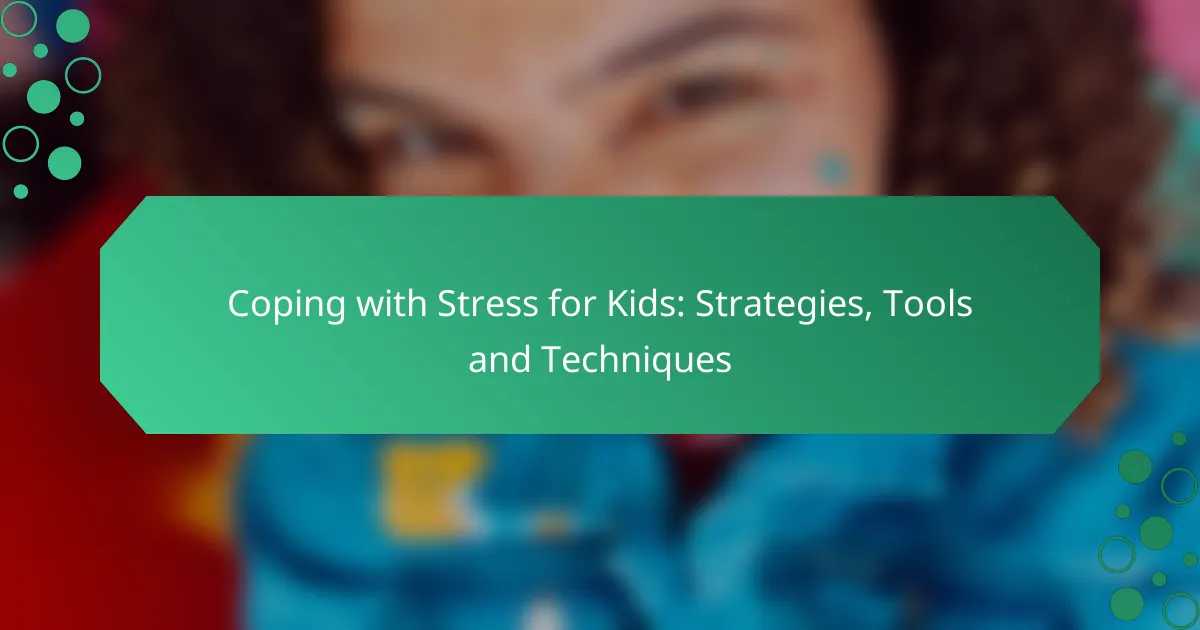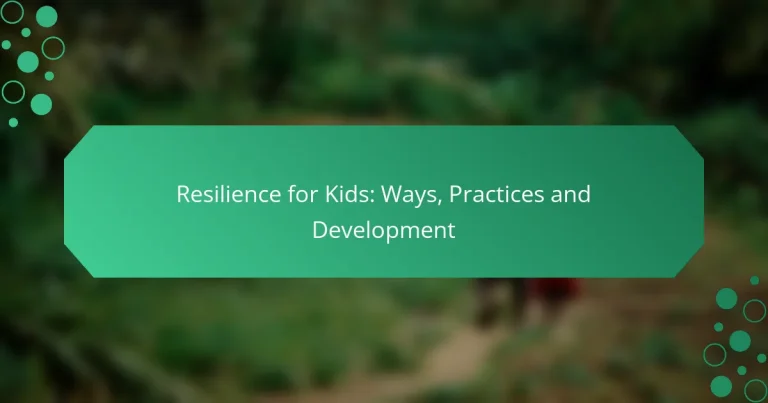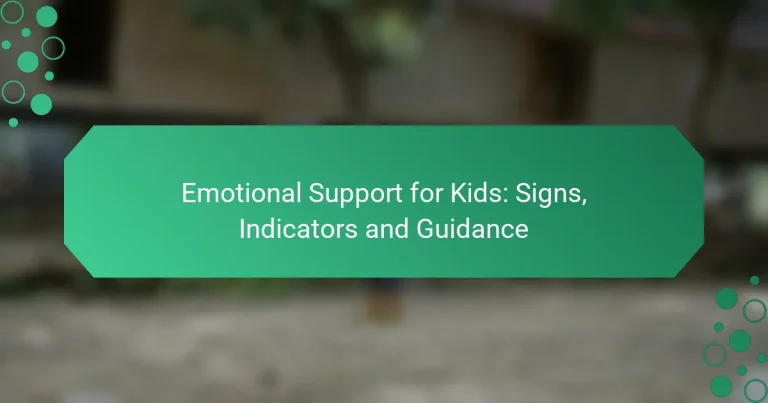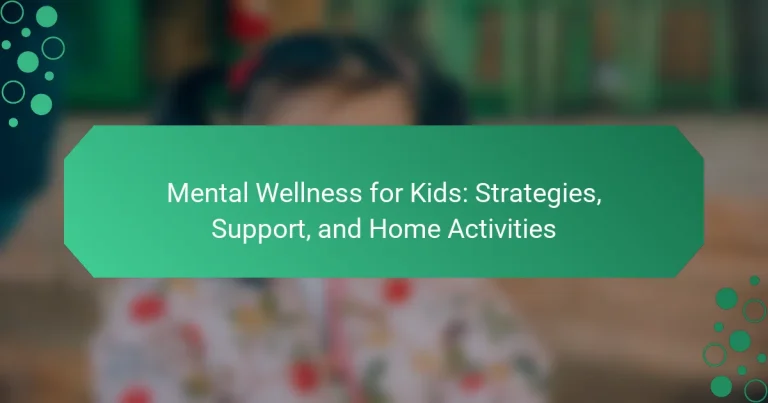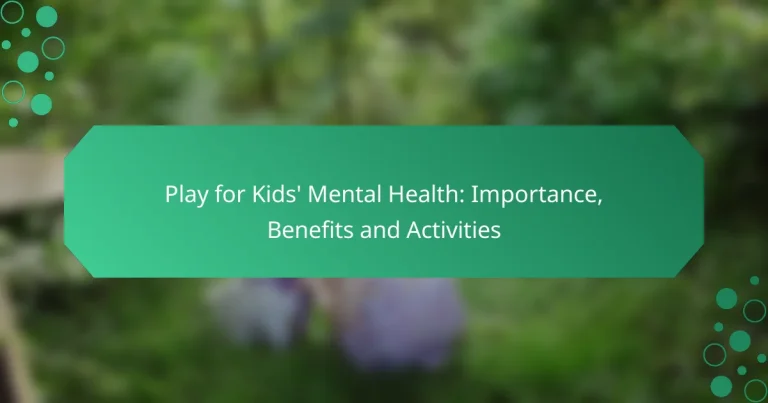Coping with Stress for Kids: Strategies, Tools and Techniques
Coping with stress is essential for kids to maintain their emotional well-being and resilience. By learning effective strategies and utilizing various tools, children can better manage anxiety and pressure in their lives. Parents play a vital role in this process by providing support, guidance, and a safe environment for open communication.
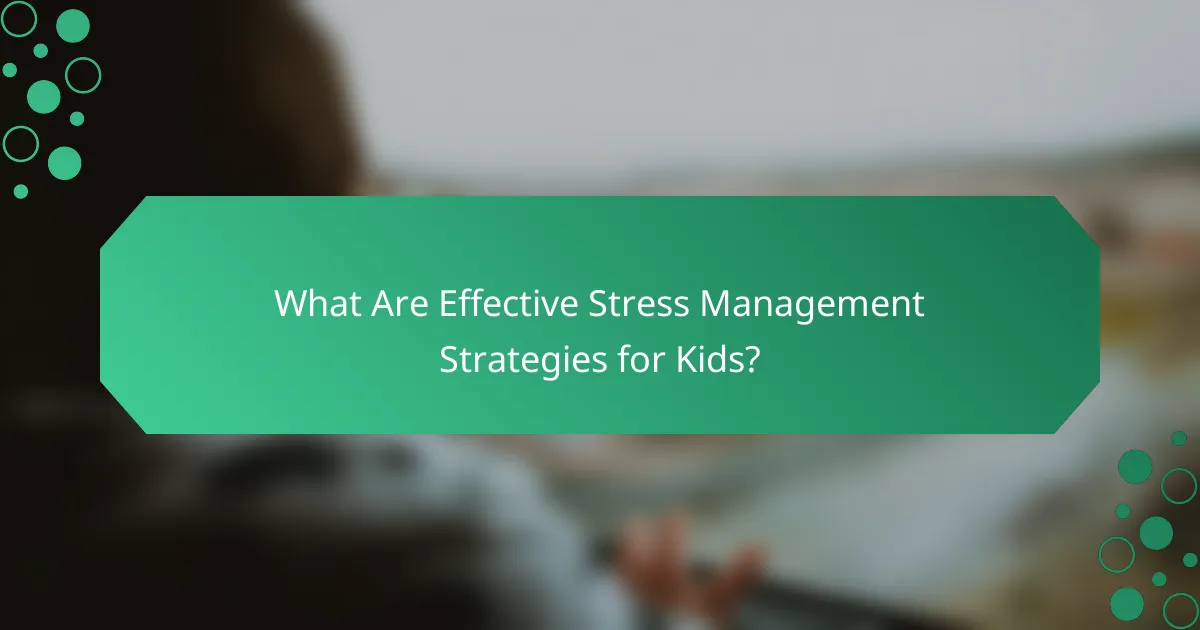
What Are Effective Stress Management Strategies for Kids?
Effective stress management strategies for kids include techniques that help them cope with anxiety and pressure in healthy ways. These strategies can empower children to handle stress better, leading to improved emotional well-being and resilience.
Mindfulness Techniques
Mindfulness techniques help kids focus on the present moment, reducing anxiety and stress. Simple practices like paying attention to their breath or observing their surroundings can ground them and promote calmness.
Encourage children to spend a few minutes each day practicing mindfulness. Activities like guided imagery or listening to calming sounds can also be beneficial. Apps designed for kids can provide engaging ways to learn these techniques.
Physical Activity
Physical activity is a powerful stress reliever for children, promoting the release of endorphins that enhance mood. Activities like running, dancing, or playing sports can help kids release pent-up energy and tension.
Encouraging at least 30 minutes of physical activity most days can significantly improve a child’s ability to cope with stress. Consider enrolling them in team sports or dance classes to make exercise fun and social.
Creative Outlets
Creative outlets such as drawing, painting, or playing music allow kids to express their feelings and thoughts. Engaging in creative activities can serve as a distraction from stressors and foster emotional release.
Provide children with materials for art or instruments for music. Setting aside time for creative expression can help them process emotions and develop coping skills in a constructive way.
Structured Routines
Structured routines provide a sense of security and predictability that can help reduce stress in children. Having a consistent daily schedule can make transitions easier and minimize anxiety about the unknown.
Incorporate regular times for homework, meals, and relaxation into their routine. Clear expectations and a visual schedule can help children feel more in control and less overwhelmed.
Breathing Exercises
Breathing exercises are simple yet effective tools for managing stress. Techniques such as deep belly breathing can help calm the nervous system and reduce feelings of anxiety.
Teach children to take slow, deep breaths, inhaling through the nose and exhaling through the mouth. Practicing this for a few minutes daily can enhance their ability to cope with stressful situations when they arise.
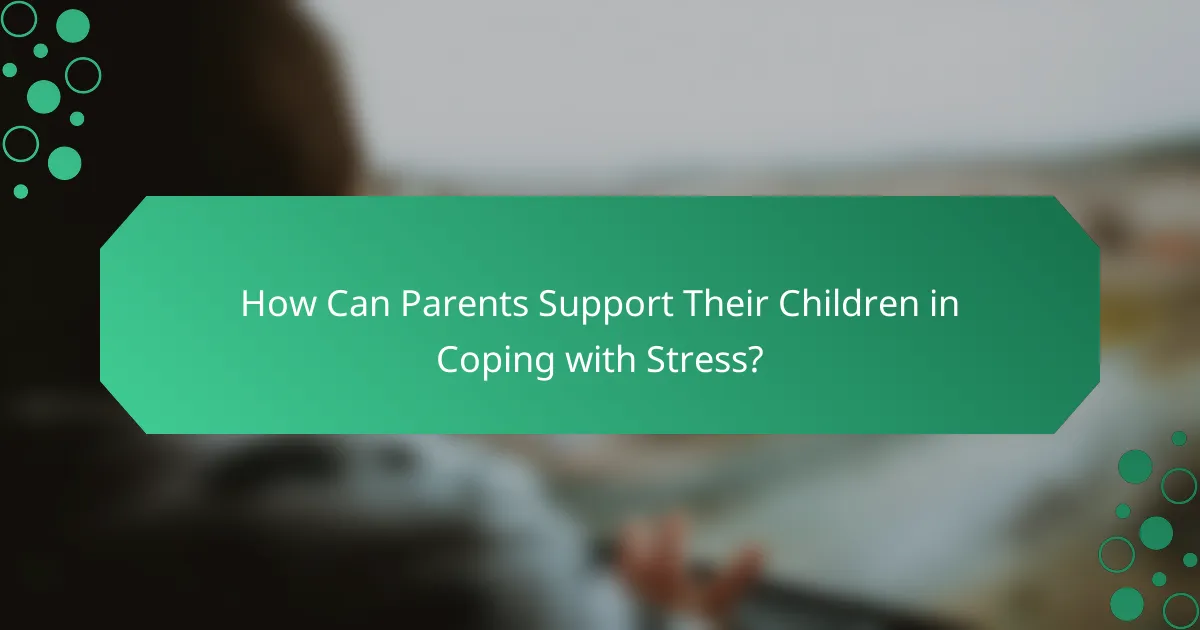
How Can Parents Support Their Children in Coping with Stress?
Parents can play a crucial role in helping their children manage stress by providing guidance, understanding, and practical tools. By fostering open communication, modeling healthy coping skills, and creating a safe environment, parents can empower their children to navigate stressful situations more effectively.
Open Communication
Encouraging open communication allows children to express their feelings and concerns without fear of judgment. Parents should create a space where kids feel comfortable sharing their thoughts, whether through casual conversations or dedicated check-ins.
Active listening is essential. Parents should validate their child’s feelings and ask open-ended questions to facilitate deeper discussions. For instance, asking “What made you feel stressed today?” can help children articulate their emotions.
Modeling Healthy Coping Skills
Children learn by observing their parents, so demonstrating healthy coping strategies is vital. Parents can share their own methods for dealing with stress, such as practicing mindfulness, engaging in physical activity, or using relaxation techniques.
Incorporating these practices into family routines can reinforce their importance. For example, families might set aside time for yoga or meditation together, making stress management a shared experience.
Creating a Safe Environment
A safe environment is essential for children to feel secure and supported. This includes both physical safety and emotional security, where children know they can express themselves without fear of negative consequences.
Parents can enhance this environment by establishing consistent routines and clear expectations. Predictability can help reduce anxiety, as children feel more in control of their surroundings. Additionally, ensuring that children have a designated space for relaxation, such as a cozy reading nook, can provide them with a retreat when they feel overwhelmed.
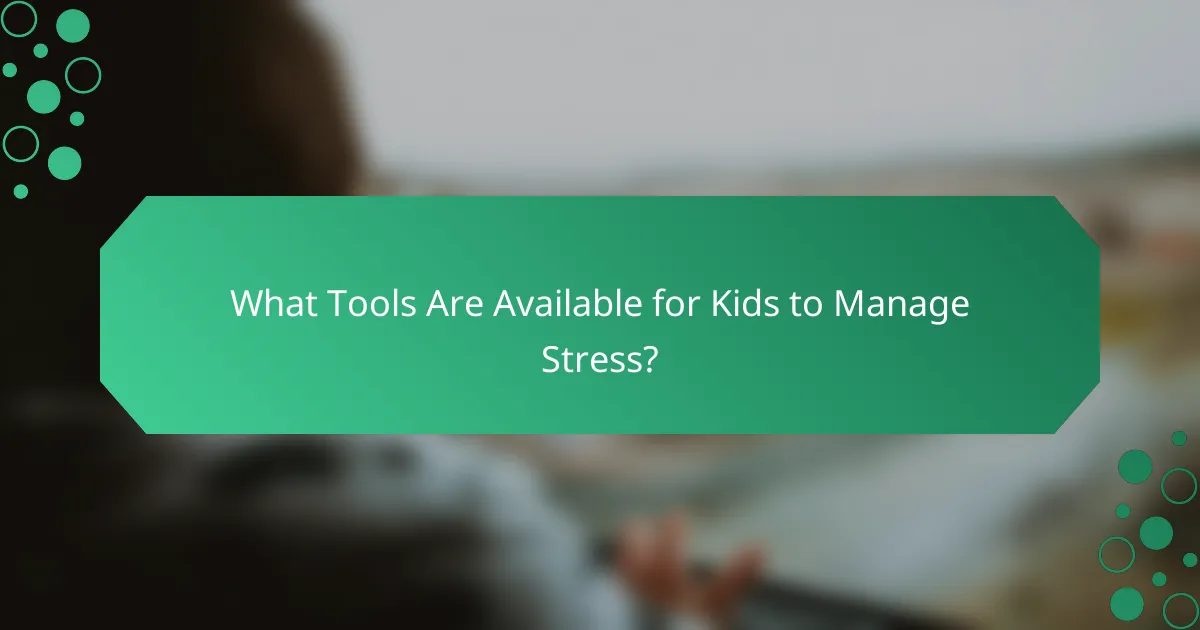
What Tools Are Available for Kids to Manage Stress?
Kids have access to various tools that can help them manage stress effectively. These tools range from physical items to digital resources, each offering unique benefits to help children cope with their feelings.
Stress Balls
Stress balls are simple yet effective tools for kids to relieve tension. Squeezing a stress ball can help release pent-up energy and promote relaxation. They come in various shapes, sizes, and textures, making them appealing to children.
When choosing a stress ball, consider its firmness and material. Some kids may prefer softer balls for a gentler squeeze, while others might benefit from firmer options that require more effort. Encourage kids to use stress balls during moments of anxiety or frustration.
Journals
Journals provide a safe space for kids to express their thoughts and feelings. Writing about their experiences can help children process emotions and gain clarity on stressful situations. Journaling can be a daily practice or used during particularly tough times.
To make journaling engaging, suggest prompts or themes, such as “What made me smile today?” or “What challenges did I face?” This can help guide their writing and encourage reflection. Kids can personalize their journals with drawings or stickers to make the process more enjoyable.
Apps for Mindfulness
Mindfulness apps are excellent tools for helping kids learn to focus and manage stress. These apps often include guided meditations, breathing exercises, and calming sounds, making mindfulness accessible and engaging for younger users.
When selecting an app, look for features that cater to children, such as colorful graphics and age-appropriate content. Popular options include Headspace for Kids and Calm, which offer tailored experiences for different age groups. Encourage kids to spend a few minutes each day using these apps to build a consistent mindfulness practice.
Art Supplies
Art supplies can serve as powerful tools for stress relief, allowing kids to express themselves creatively. Drawing, painting, or crafting can help children channel their emotions into something tangible, providing a sense of accomplishment and relaxation.
Encourage kids to explore various mediums, such as colored pencils, watercolors, or clay. Setting aside dedicated time for art can create a calming routine. Remind them that there are no rules in art; the focus should be on enjoyment and self-expression rather than perfection.
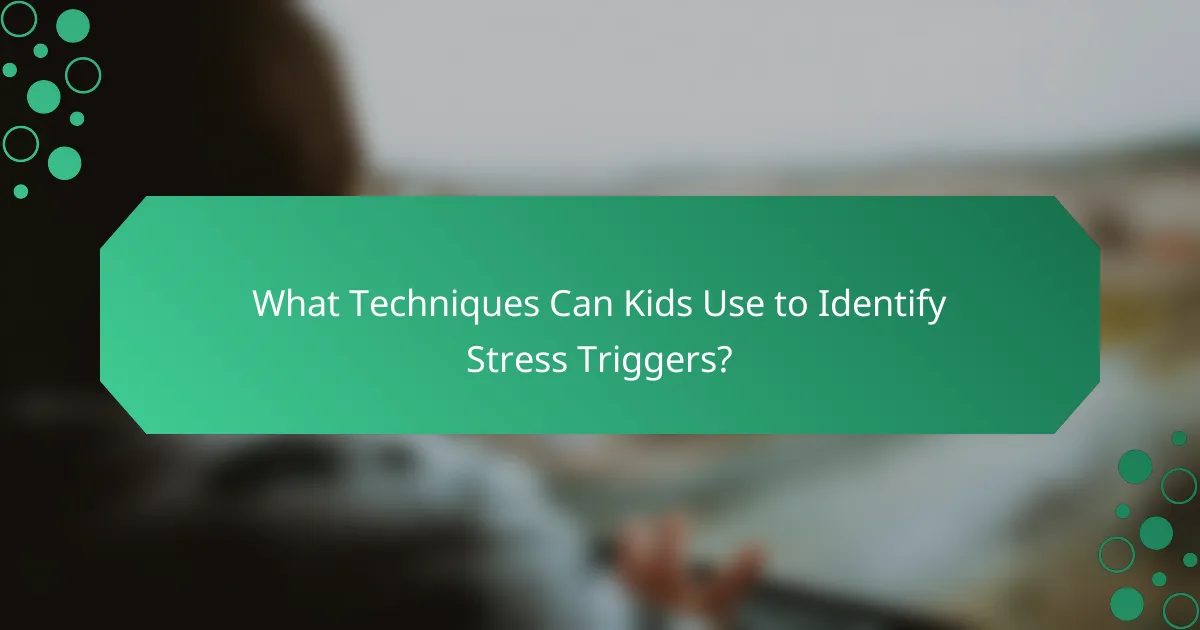
What Techniques Can Kids Use to Identify Stress Triggers?
Kids can identify stress triggers by using techniques that help them recognize their feelings and reflect on their daily experiences. Understanding what causes stress is the first step toward managing it effectively.
Feelings Chart
A feelings chart is a visual tool that helps children identify and label their emotions. By using a chart with various emotions illustrated, kids can point out how they feel in different situations. This practice encourages emotional awareness and can highlight patterns related to stress triggers.
To create a feelings chart, parents can include a range of emotions such as happy, sad, anxious, or frustrated. Kids can use stickers or colors to mark their feelings throughout the day, making it easier to see when stress arises.
Daily Reflection
Daily reflection involves taking a few moments each day for kids to think about their experiences and feelings. This technique can be done through journaling or simply discussing the day with a parent or caregiver. Reflecting on what went well and what was challenging can help kids pinpoint specific stressors.
Encourage children to ask themselves questions like, “What made me feel happy today?” or “What stressed me out?” Keeping this practice consistent, such as at bedtime, can help them develop a better understanding of their emotional responses over time.

How Does Stress Affect Kids’ Mental Health?
Stress can significantly impact kids’ mental health, leading to emotional and behavioral issues. When children experience stress, it can hinder their ability to cope effectively, resulting in anxiety, depression, and difficulties in daily functioning.
Impact on Learning
Stress negatively affects a child’s ability to learn and concentrate. When kids are stressed, their brains may struggle to process information, leading to decreased academic performance and lower grades.
For example, a child facing high levels of stress may find it hard to focus during lessons or complete homework assignments. This can create a cycle where poor performance increases stress, further impairing learning.
Behavioral Changes
Stress can lead to noticeable behavioral changes in children, such as increased irritability or withdrawal from social interactions. These changes can manifest as mood swings, aggression, or a lack of interest in activities they once enjoyed.
Parents and caregivers should be aware of these signs and consider implementing supportive strategies. Encouraging open communication and providing a stable environment can help mitigate these behavioral shifts and support a child’s emotional well-being.

What Are the Signs of Stress in Children?
Signs of stress in children can manifest in various ways, including emotional, behavioral, and physical symptoms. Recognizing these signs early can help parents and caregivers provide the necessary support to alleviate stress.
Emotional Signs of Stress
Emotional signs of stress in children may include increased irritability, anxiety, or sadness. Children may also exhibit mood swings or become withdrawn, showing less interest in activities they once enjoyed.
It’s essential to pay attention to changes in a child’s emotional state, as these can indicate underlying stressors. For example, if a child who is usually cheerful becomes consistently moody, it may be a sign they are struggling with stress.
Behavioral Signs of Stress
Behavioral signs of stress can include changes in sleeping patterns, difficulty concentrating, or regression to earlier behaviors, such as bedwetting. Children might also act out more frequently or show signs of aggression.
Monitoring a child’s behavior for sudden changes can help identify stress. For instance, a child who starts having tantrums or refuses to go to school may be experiencing significant stress.
Physical Signs of Stress
Physical symptoms of stress in children can manifest as headaches, stomachaches, or fatigue. They may also experience changes in appetite or exhibit signs of nervousness, such as nail-biting or fidgeting.
Parents should be vigilant about these physical signs, as they can often be overlooked. If a child frequently complains of unexplained aches or shows a sudden drop in energy, it may be time to explore potential stressors in their environment.
